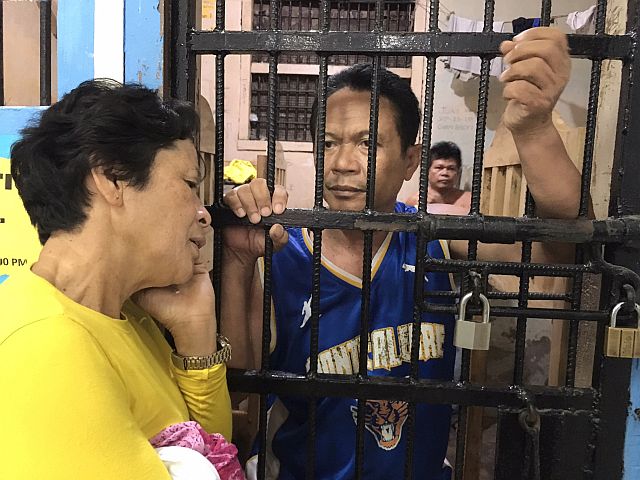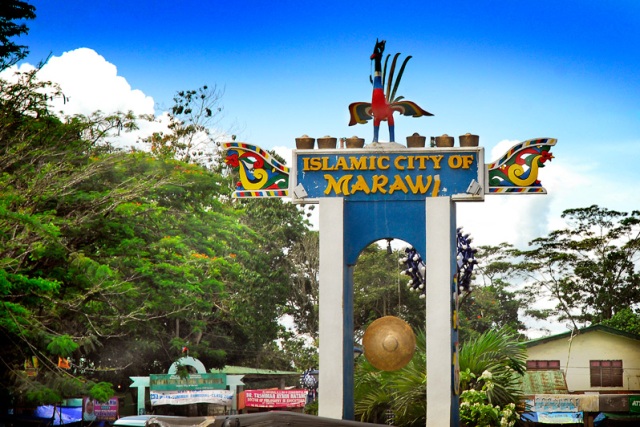
It’s no surprise that the A-10’s first mission was a show of force over the Scarborough Shoal, which China refers to as Huangyan Island and claims as its own. With plans to develop the narrow strip of land into a tourist destination, Beijing was incensed to see the Warthogs fly by
Whenever the Pentagon sends troops abroad it’s about demonstrating resolve, reassuring allies or confronting potential opponents – or some combination of all three. But for the A-10 Warthogs and their crews in the Philippines, their biggest message might be one for critics back home.
On April 16, the U.S. Air Force announced that four of the venerable ground attack jets would remain in the Philippines after taking part in the annual Balikatan training exercises with Manila’s forces.
Three HH-60G Pave Hawk rescue helicopters and an MC-130H Combat Talon II tanker would round out the new air contingent at Clark Air Base.
The deployment at Clark is one part of a deal between Washington and Manila called the Enhanced Defense Cooperation Agreement. Signed on April 28, 2014, the arrangement opened a number of Philippine military bases to American troops and outlined plans for increased cooperation between the two countries’ armed forces.
The EDCA would “help strengthen our 65-year-old alliance, and deepen our military-to-military cooperation at a time of great change in the Asia-Pacific,” Secretary of Defense Ashton Carter told reporters during a visit to the Philippines on April 14. “In the South China Sea, China’s actions in particular are causing anxiety and raising regional tensions.”

As Carter noted, Beijing’s ambitions in the South China Sea is the major concern for the Philippines and its neighbors in Southeast Asia. Effectively claiming the entire body of water as its sovereign territory, China policy has brought it near close to skirmishing with Manila’s ships.
In 2012, the Philippines found itself in a particularly embarrassing stand-off with unarmed Chinese “marine surveillance” ships near the disputed Scarborough Shoal, less than 250 miles west of Manila. While Beijing’s vessels ultimately withdrew, they blocked the BRP Gregorio Del Pilar – an ex-U.S. Coast Guard cutter and the largest ship then in the Philippine Navy – from moving into arrest Chinese fishermen.
Since then, Chinese authorities have used their dominant position to harass Philippine fishermen in the area. More importantly, Beijing began building a series of man-made islands – complete with air defenses, ballistic missile sites and runways able to support fighter jets and bombers – throughout the South China Sea to help enforce its claims.
“Countries across the Asia-Pacific are voicing concern with China’s land reclamation, which stands out in size and scope, as well as its militarization in the South China Sea,” Carter added in his comments in Manila. “We’re continuing to fly, sail and operate wherever international law allows.”
So, it’s no surprise that the A-10’s first mission was a show of force over the Scarborough Shoal, which China refers to as Huangyan Island and claims as its own. With plans to develop the narrow strip of land into a tourist destination, Beijing was incensed to see the Warthogs fly by.
“This threatens the sovereignty and national security of the relevant coastal states, as well as the regional peace and stability,” the Chinese Ministry of Defense said in a statement according to People’s Daily, an official organ of the country’s Communist Party. “We must express our concern and protest towards it.”
Though originally built to blast hordes of Soviet tanks in Europe, the blunt nosed attackers are a threat to small warships and other surface targets. The aircraft’s main armament is a single, massive 30-millimeter cannon that can fire up to 70 shells per second.
On top of that, the straight-winged planes can carry precision laser- and GPS-guided bombs and missiles. On March 28, 2011, Warthogs showed off their maritime skills when they destroyed two Libyan patrol craft during the international air campaign against the country’s long time dictator Muammar Gaddafi.
After the Pentagon announced the Warthog would stay in the Philippines, the Air Force released shots of the jets sitting at Clark, each loaded with targeting pods, training versions of the AGM-65 Maverick air-to-ground missile and an AIM-9 Sidewinder short-range air-to-air missile. Northrop Grumman’s LITENING pod has a laser designator and a powerful infrared camera that can also double as a surveillance system if necessary.
Over Scarborough, the A-10s sported a LITENING on the right wing and an AN/ALQ-184 electronic jamming pod on the left. All four Warthogs, along with two of the Pave Hawks, went out for the initial maritime patrol.
But the Warthogs made an even bigger statement just by flying the mission at all – and not to officials in Beijing, but to critics back home. The deployment comes as the Air Force continues to move forward with plans to retire the low- and slow-flying planes without a clear replacement available.
To hear the flying branch tell it, the aircraft are inflexible, dated Cold Warriors unable to survive over the modern battlefield. Unlike multi-role fighter bombers like the F-16 or up-coming, but troublesome F-35, the A-10 is only good at one thing: close air support for troops on the ground.
The A-10 “is a 40-year-old single-purpose airplane,” then Secretary of Defense Chuck Hagel said in February 2014. “There’s only so much you can get out of that airplane,” Air Force Gen. Herbert Carlisle, chief of Air Combat Command, declared more than a year later.
The Warthogs’ trip to the Philippines stands in stark contrast to these claims. According to the Air Force itself, the A-10s and HH-60s will fly missions providing air and maritime domain awareness and personnel recovery, combating piracy and otherwise keeping anyone from denying access to “the global commons” in the South China Sea.
The flying branch didn’t randomly pick the A-10 for the job either. “Selecting the A-10C and HH-60Gs for this mission was strategically and economically the right decision,” Brig. Gen. Dirk Smith, PACAF’s director of air and cyberspace operations, told Air Force reporters after the detachment stood up at Clark.
“PACAF considered multiple options for what aircraft to use, however, the A-10Cs were the right choice for a number of reasons,” McGovern explained further. “A-10Cs also have a proven record operating out of short and austere airstrips, provide a flexible range of capabilities, and have a mission profile consistent with the air and maritime domain awareness operations the air contingent will conduct.”
The Warthog’s ability to stay airborne for long periods of time was another point in its favor. Of course, the fact that the jets were already in the Philippines for Balikatan didn’t hurt.
Still, the A-10 is cheap to operate in general. Compared to around $20,000 per flying hour for the F-16 or more three times that amount for bombers like the B-1 and B-52, the Air Force has to spend less than $20,000 for every hour a Warthog is in the air.
“With a relatively small investment we were able to deepen our ties with our Philippine allies and strengthen our relationship,” McGovern added. “The aircraft involved in subsequent deployments will be tailored to airfield capability and capacity and desired objectives.”
In February, the Air Force announced plans to start retiring the A-10s by 2017 and have the entire fleet gone by the end of 2022. Hopefully deployments like the one to the Philippines will show both the Chinese and the Pentagon that the Warthogs still have a lot of fight left in them.
http://www.scout.com/military/warrior/story/1668250-us-a-10s-challenge-china-south-china-sea






